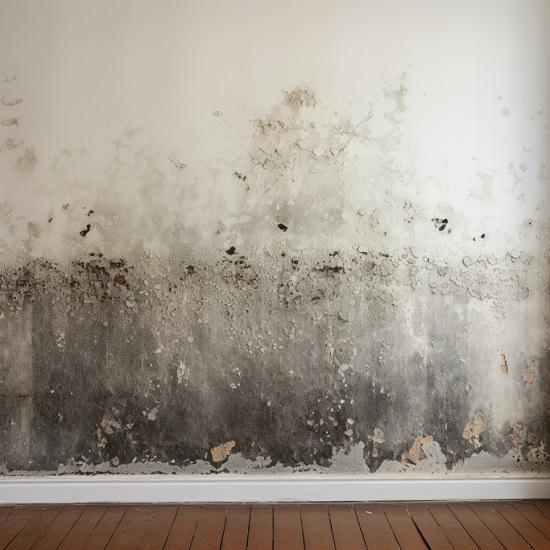Reliable Post Mold Remediation Cleaning Protocols
Reliable Post Mold Remediation Cleaning Protocols
Blog Article
Professional Tips for Message Mold And Mildew Remediation Success
In the realm of mold remediation, effectively getting rid of mold and mildew is only half the fight; the true difficulty exists in preventing its reappearance. Post-remediation initiatives play a crucial role in making certain a mold-free environment in the long term. By adhering to skilled pointers and ideal techniques, people can protect their areas against mold revival and preserve a healthy indoor environment. It is in this stage of the remediation process that interest to information and aggressive procedures genuinely make a distinction.
Screen Humidity Degrees Regularly
After finishing mold and mildew remediation treatments, keeping optimal moisture degrees is critical to prevent mold re-growth and ensure a healthy interior environment. High humidity degrees above 60% produce a helpful setting for mold to thrive, making normal keeping track of a positive action to prevent any kind of future mold and mildew problems.
Furthermore, establishing a regular schedule for humidity checks, specifically in risky areas such as cellars, washrooms, and cooking areas, is a positive approach to mold prevention. By constantly keeping an eye on humidity levels, residential property owners can successfully alleviate the threat of mold reoccurrence and preserve a healthy and balanced interior setting post-remediation.
Conduct Thorough Inspections Post-Remediation
Adhering to the completion of mold and mildew removal treatments, it is essential to perform extensive examinations to verify the efficiency of the remediation procedure. These post-remediation evaluations are essential in making certain that the mold and mildew issue has been effectively dealt with which there is no recurrence or staying mold and mildew growth. Evaluations must be performed by qualified experts that have proficiency in recognizing mold and mildew and assessing indoor air quality.
Throughout these assessments, numerous approaches such as visual evaluations, air tasting, and surface area sampling might be utilized to completely examine the remediated locations. Aesthetic evaluations involve an in-depth examination of the premises to check for any type of noticeable signs of mold growth or water damages. Air tasting assists in establishing the air-borne mold spore degrees, while surface sampling can discover mold bits on surfaces.
Implement Appropriate Ventilation Approaches
After guaranteeing the efficiency of the mold removal procedure via detailed inspections, the next critical action is to concentrate on executing appropriate ventilation techniques. Ample air flow is vital in protecting against mold reoccurrence by regulating wetness levels and advertising air flow.
Appropriate air flow not only help in protecting against mold and mildew growth but likewise contributes to the general wellness and comfort of owners. By ensuring ample ventilation throughout the property, you can decrease the danger of mold regrowth and produce a much healthier living atmosphere.

Use Mold-Resistant Materials for Repairs
To improve the long-term effectiveness of mold remediation initiatives, incorporating mold-resistant materials for repair work is essential in minimizing the threat of future mold growth. Mold-resistant materials are made to stand up to dampness and inhibit mold development, making them a necessary choice for areas vulnerable to moisture and humidity. When fixing locations influenced by mold and mildew, utilizing materials such as mold-resistant drywall, mold-resistant paints, and mold-resistant caulking can help prevent mold recurrence.
Mold-resistant drywall is an exceptional alternative to conventional drywall in locations like restrooms and cellars where wetness degrees are greater. This kind of drywall has a special finish that withstands mold and mildew growth also when subjected to damp problems. Additionally, using mold-resistant paints containing antimicrobial representatives can even more hinder mold and mildew development on walls and ceilings.
In areas where moisture prevails, such as kitchens and washrooms, making use of mold-resistant caulking around sinks, bathtubs, and windows can help secure out water and protect against mold from holding in splits and holes. By purchasing these mold-resistant products during fixings post-remediation, you can significantly minimize the probability of future mold issues and keep a much healthier interior setting.
Maintain Sanitation and Address Water Issues
Guaranteeing tidiness and promptly addressing water concerns are basic practices to support in safeguarding interior spaces from mold and mildew reinfestation. After mold removal, it is important to maintain a clean setting to stop the regrowth of mold and mildew (After mold remediation). Regular cleaning, dusting, and vacuuming can aid eliminate any kind of sticking around mold spores and avoid them from clearing up and proliferating. Furthermore, maintaining indoor rooms dry and resolving any kind of water problems quickly is essential in mold and mildew avoidance. Leaks, water breach, or high humidity degrees can create the perfect breeding place for mold and mildew, so it is necessary to deal with any kind of water-related troubles immediately.
To maintain tidiness, consider making use of HEPA filters in vacuums and air cleansers to trap mold more info here spores and avoid their flow airborne. Additionally, ensuring correct air flow in areas prone to moisture build-up, such as bathrooms and kitchen areas, can aid maintain moisture degrees in check. By staying vigilant about tidiness and addressing water problems immediately, you can properly stop mold and mildew reinfestation and keep a healthy and balanced indoor atmosphere.
Verdict

In the world of mold removal, efficiently eradicating mold and mildew is only half the battle; the real obstacle lies in stopping its reappearance. After completing mold remediation treatments, maintaining optimum humidity degrees is critical to protect against mold re-growth and make sure a healthy and balanced indoor environment. High humidity levels over 60% create a helpful environment for mold and mildew to grow, making regular monitoring a positive action to protect against any type of future mold concerns.
To improve the long-lasting effectiveness of mold removal initiatives, incorporating mold-resistant products for repair services is crucial in minimizing the threat of future mold and mildew growth. After mold and mildew remediation, it is critical to preserve a clean setting to prevent find here the regrowth of mold.
Report this page